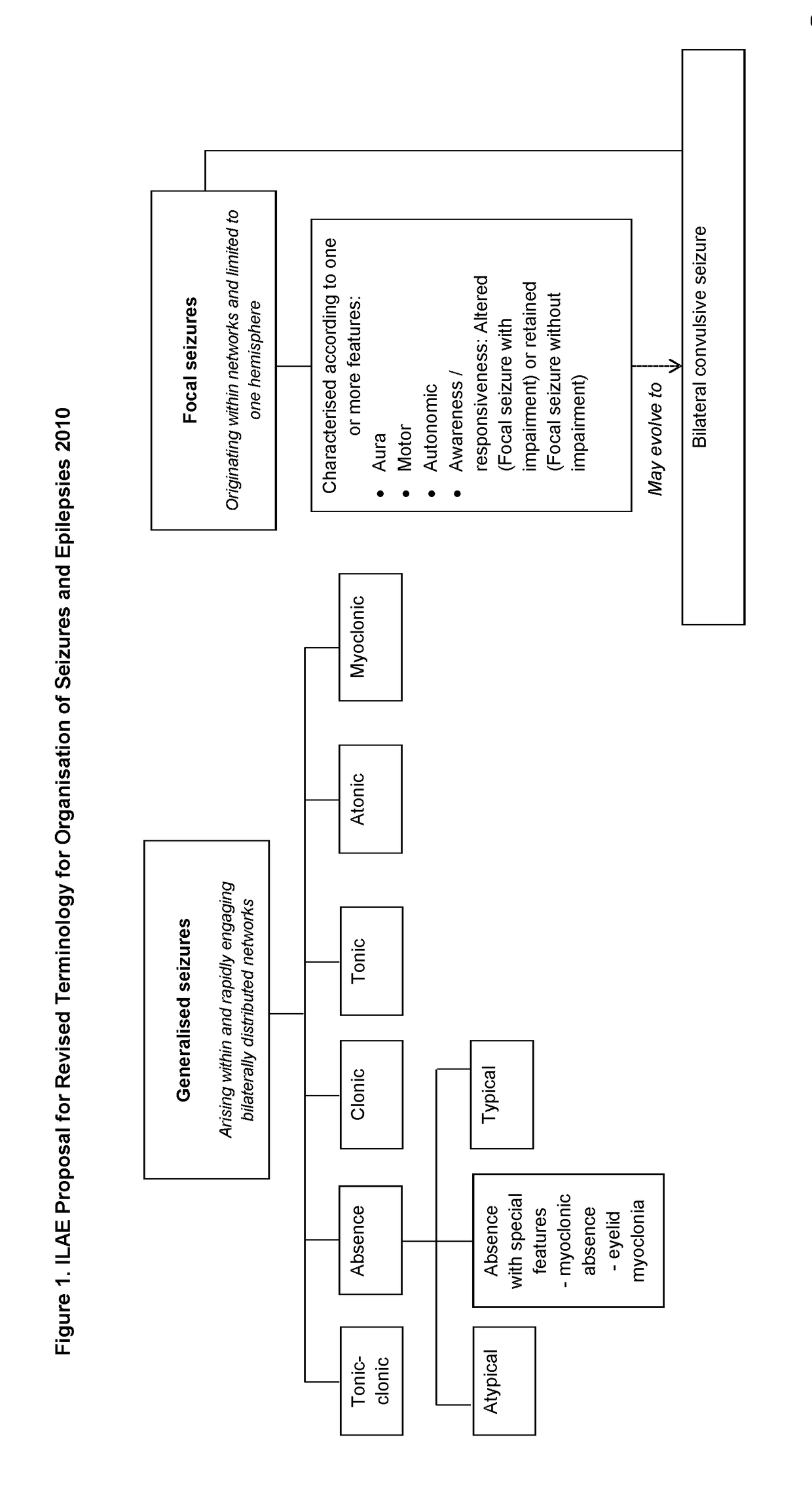Use of cannabidiol in the treatment of epilepsy
a cannabinoid and epilepsy technology, applied in the direction of non-active ingredients, oil/fat/waxes, plant/algae/fungi/lichens, etc., can solve the problems of difficult treatment, cognitive, behavioral and motor delays, and inability to obtain seizure freedom
- Summary
- Abstract
- Description
- Claims
- Application Information
AI Technical Summary
Benefits of technology
Problems solved by technology
Method used
Image
Examples
example 1
Efficacy of Cannabidiol Reducing Seizure Frequency in Children ANC Young Adults with Aicardi Syndrome
Materials and Methods
[0097]Of 137 children and young adults with severe, childhood onset treatment-resistant epilepsy (TRE), 14 suffered from Aicardi syndrome. These subjects were tested with a highly purified extract of cannabidiol (CBD) obtained from a cannabis plant. The participants in the study were part of an expanded access compassionate use program for CBD.
[0098]All of these patients diagnosed with Aicardi Syndrome presented with multiple seizure types which included
[0099]focal seizures with impairment; infantile spasm; clonic seizures; tonic seizures; tonic-clonic seizures; atonic seizures; myoclonic seizures; absence seizures; and focal seizures evolving to secondary generalised seizures.
[0100]All patients entered a baseline period of 4 weeks when parents / caregivers kept prospective seizure diaries, noting all countable motor seizure types.
[0101]The patients then received a...
PUM
| Property | Measurement | Unit |
|---|---|---|
| concentration | aaaaa | aaaaa |
| concentration | aaaaa | aaaaa |
| concentration | aaaaa | aaaaa |
Abstract
Description
Claims
Application Information
 Login to View More
Login to View More - R&D
- Intellectual Property
- Life Sciences
- Materials
- Tech Scout
- Unparalleled Data Quality
- Higher Quality Content
- 60% Fewer Hallucinations
Browse by: Latest US Patents, China's latest patents, Technical Efficacy Thesaurus, Application Domain, Technology Topic, Popular Technical Reports.
© 2025 PatSnap. All rights reserved.Legal|Privacy policy|Modern Slavery Act Transparency Statement|Sitemap|About US| Contact US: help@patsnap.com



